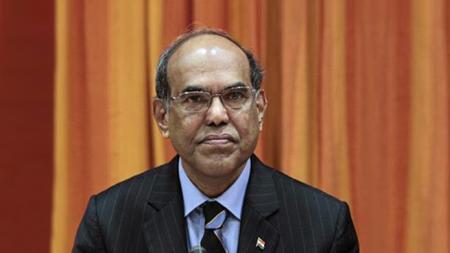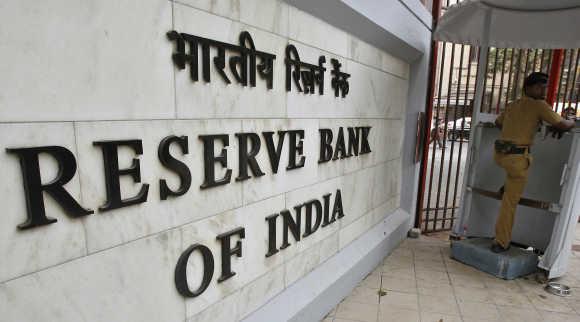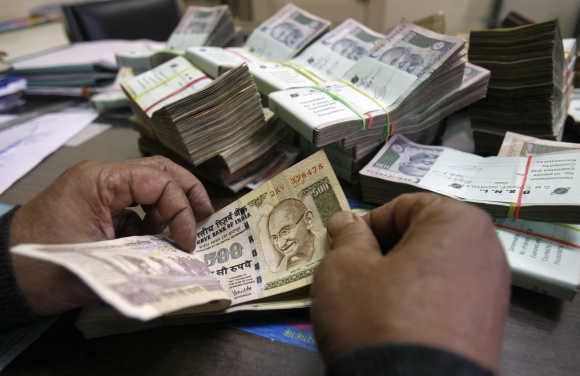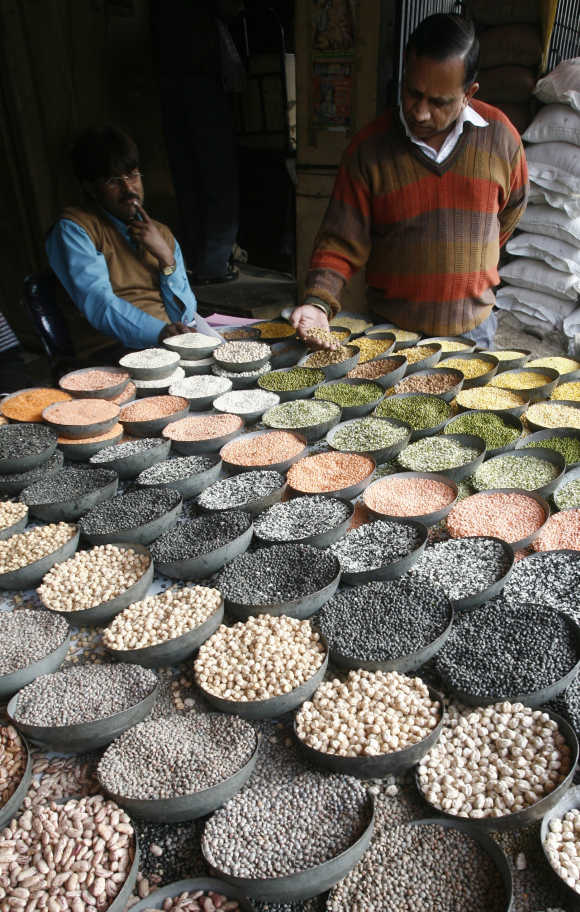 | « Back to article | Print this article |
Why RBI should embrace speculation
RBI should recognise need to bring the ratio of minimum to average volatility up to at least 75 per cent, the level that prevails in global foreign exchange markets, writes Jamal Mecklai
Rupee volatility has continued to remain elevated in 2012, even as volatility in global foreign exchange markets has been declining.
Indeed, the average volatility of the rupee since January (10.6 per cent, up substantially from 6.8 per cent in 2011) has been higher than that of the euro (9.5 per cent, down quite a bit from 11.4 per cent in 2011) -- the first time this has happened in at least 10 years.
As a result, risk management has become much more difficult for Indian companies, particularly as they also have to labour against so many constraints that don't exist in global markets.
Click NEXT to read further. . .
Why RBI should embrace speculation
The situation is compounded by the fact that intra-day volatility has also risen sharply; at 0.73 per cent -- USD/INR moves by an average of 39 paise each day -- it is nearly at the level prevailing in global markets (0.89 per cent).
As has been apparent for some time, the Indian market is suffering all the consequences of the fully open global market, without the commensurate benefits -- greater liquidity (which results in finer spreads), a wider range of instruments and, of course, many, many fewer constraints on action.
To my mind, the villain of the piece is the spate of actions taken by the Reserve Bank of India at the end of last year.
Click NEXT to read further. . .
Why RBI should embrace speculation
From July to December, the rupee had been one of the world's worst performers, losing 18 per cent, before the RBI pulled out all (or most of) the stops.
However, over the same period, the euro fell by more than 10 per cent against the dollar, and most other emerging market currencies fell by between 15 and 20 per cent.
It was clear to all, including the RBI, that the 'crisis' was primarily the fallout of the sudden surge in global volatility.
Despite this, the RBI's response was to revert to its historic fear of speculators -- it reduced banks' open position limits, prohibited companies from rebooking cancelled contracts and sharply curbed the facility for companies to hedge without having confirmed orders in hand.
Click NEXT to read further. . .
Why RBI should embrace speculation
The cumulative impact of all of this was to make the market thinner and more volatile, while limiting the ability of companies to use the market for risk management.
However, speculation was not the primary problem. If it were, rupee volatility should be sharply lower today, given that global volatility has been declining and domestic speculation has been sharply curtailed.
The real problem was the fact that the impact of global volatility was substantially exacerbated by the huge -- about $80 billion -- overhang of short dollar positions in the market, which, in turn, was the result of the inordinately low volatility (four to five per cent) that prevailed for several months before July.
Click NEXT to read further. . .
Why RBI should embrace speculation
Tragically, this is not the first time this has happened -- we have had such episodes repeatedly every few years.
Human nature wants to believe things will go its way, and if the market is quiet and you have to pay to buy forward, well . . . let's wait for another day.
Unfortunately, this complacency problem remains unaddressed.
The RBI has, of course, highlighted the problem and pontificated on the need for companies to be prudent.
However, recommendations from the central bank -- or anyone, for that matter -- usually fall on deaf ears when the cost of hedging is several times the intra-day market movement, as happens when rupee volatility declines.
Click NEXT to read further. . .
Why RBI should embrace speculation
A largely one-sided market like ours, where rupee volatility often falls so low that the minimum volatility is less than half the average volatility, is bound to be unstable.
The RBI needs to recognise the need to bring this ratio (of minimum to average volatility) up to at least 75 per cent, which is the level that prevails in global foreign exchange markets.
The only way to do this is to embrace speculation and deregulate the foreign exchange market further.
The first step must be to return the facility for Indian companies to book and cancel contracts freely upto at least the previous year's exposures (over and above actual exposures).
Click NEXT to read further. . .
Why RBI should embrace speculation
I understand that this is a step away from the currently articulated philosophy of not permitting speculation; however, the reality is that the RBI had already taken that step a few years ago.
It is, thus, clearly not a philosophical issue.
The next step should be to expand the market, permitting a wider range of players (primary dealers, mutual funds, NBFCs and FIIs) to enter and use the foreign exchange market -- perhaps to a maximum limit in the initial stages -- despite not having an underlying exposure.
Click NEXT to read further. . .
Why RBI should embrace speculation
This, together with a more rational approach to structured products, will ensure that the market will deepen and mature.
Minimum volatility will rise, and even the cockiest of companies will be certain to hedge more of their risk.
Over time, these domestically driven market crises will reduce in frequency and intensity, Indian companies' balance sheets will get stronger, and the more open environment will attract more investment -- providing our current account weakling additional support.








